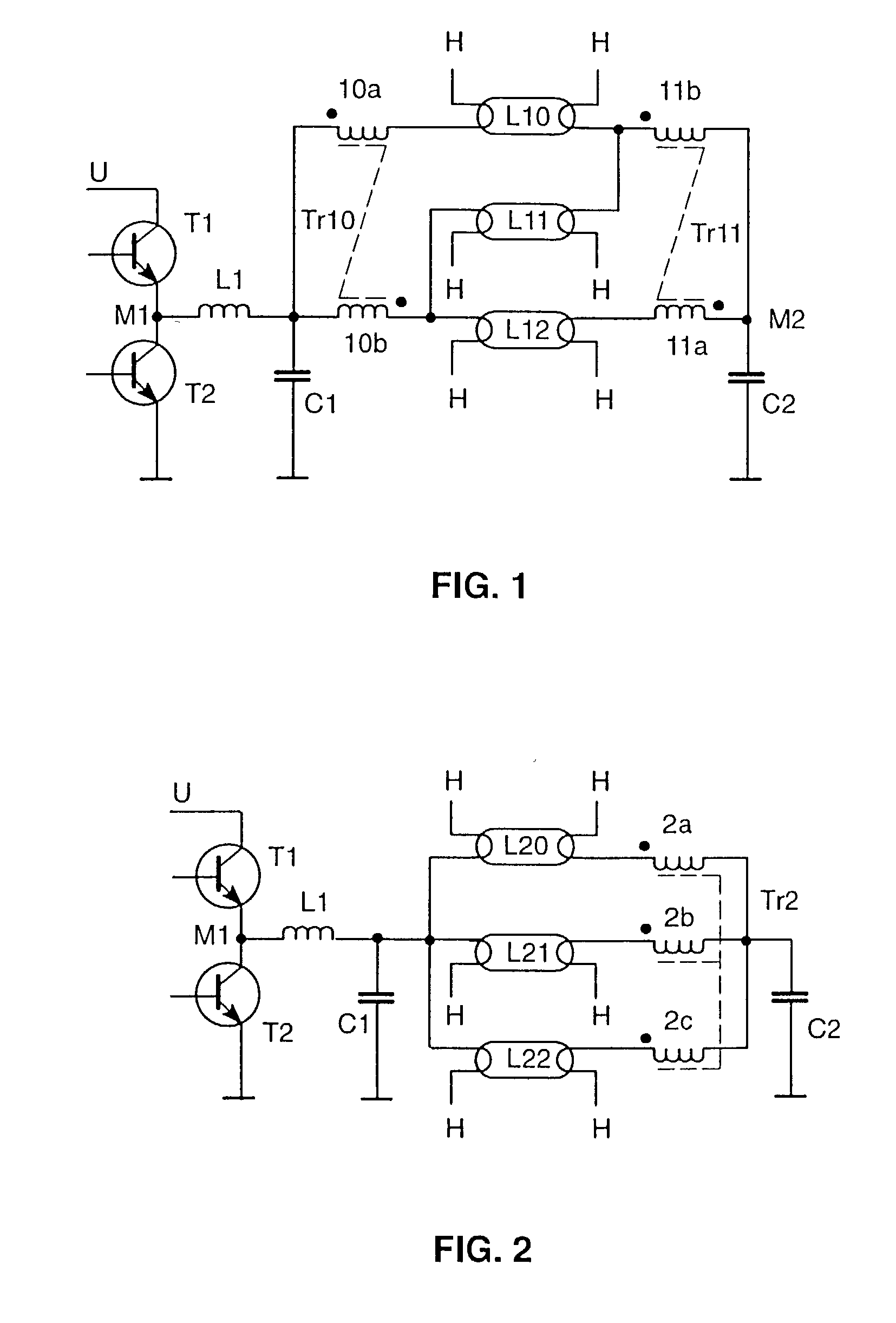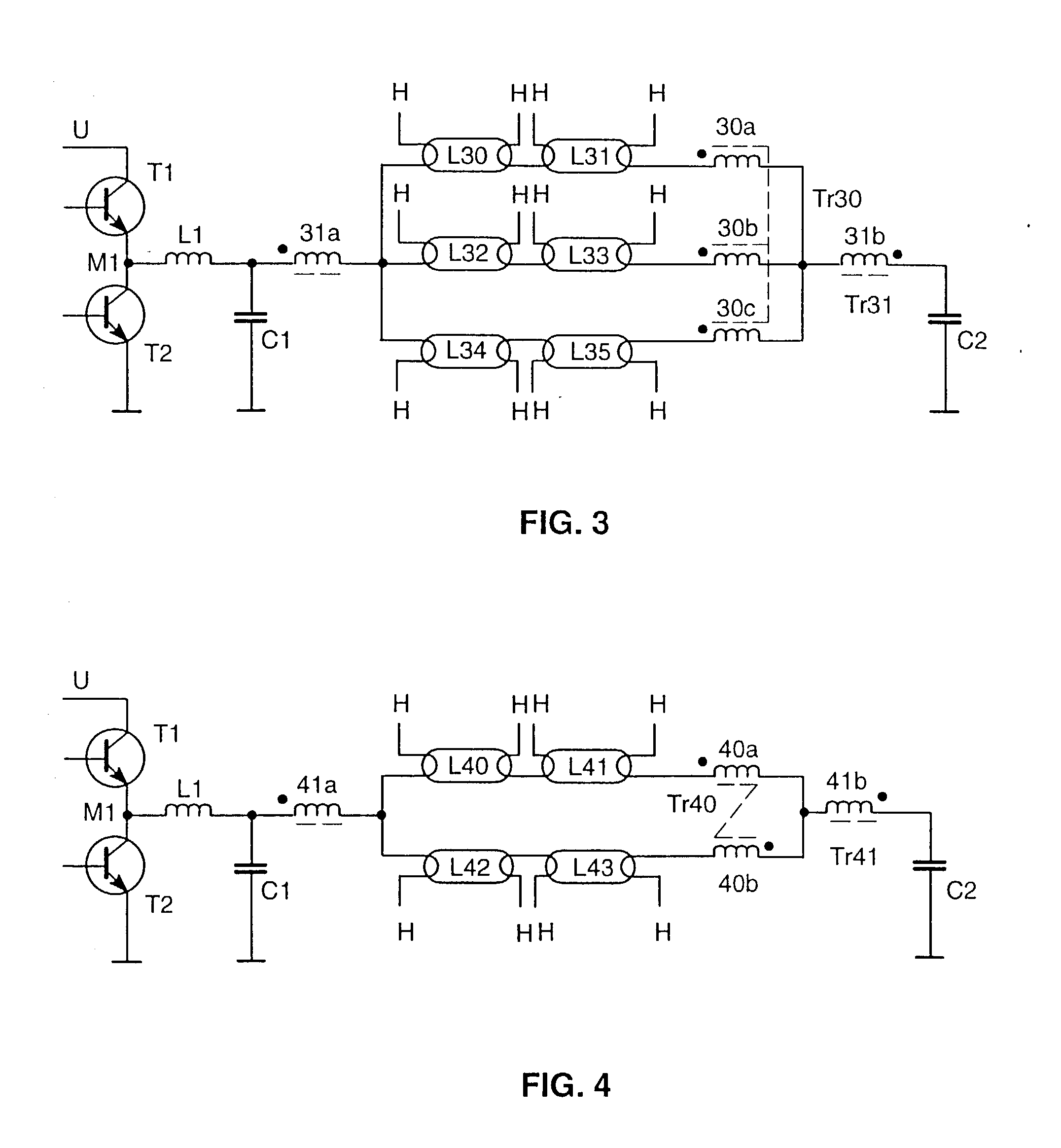Ballast for operating at least one low-pressure discharge lamp
a low-pressure discharge and ballast technology, applied in the direction of light sources, electric lighting sources, lighting devices, etc., to achieve the effect of improving the luminous efficiency and controlling the brightness of the lamp
- Summary
- Abstract
- Description
- Claims
- Application Information
AI Technical Summary
Benefits of technology
Problems solved by technology
Method used
Image
Examples
Embodiment Construction
[0038] In FIGS. 1 to 8, the same reference symbols have been selected for identical components of the ballast or of the circuit arrangement. In the case of all exemplary embodiments of the invention, the ballast has a half-bridge inverter that essentially comprises the transistors T1, T2 and a drive device (not illustrated) for the transistors T1, T2, as well as the half-bridge capacitor C2. The half-bridge inverter T1, T2 is supplied at its voltage inputs with a DC voltage U that is generated in a known way by filtering and rectifying the AC supply voltage. The filter and rectifier circuits of the ballast are therefore not illustrated in the figures and are also not intended to be further described here. The inductor L1 is connected to the center tap M1 between the transistors T1, T2 of the half-bridge inverter. Connected to the inductor L1 is the first terminal of the capacitor C1, while the second terminal of the capacitor C1 is connected to frame potential. The inductor L1 and t...
PUM
 Login to View More
Login to View More Abstract
Description
Claims
Application Information
 Login to View More
Login to View More - R&D
- Intellectual Property
- Life Sciences
- Materials
- Tech Scout
- Unparalleled Data Quality
- Higher Quality Content
- 60% Fewer Hallucinations
Browse by: Latest US Patents, China's latest patents, Technical Efficacy Thesaurus, Application Domain, Technology Topic, Popular Technical Reports.
© 2025 PatSnap. All rights reserved.Legal|Privacy policy|Modern Slavery Act Transparency Statement|Sitemap|About US| Contact US: help@patsnap.com



